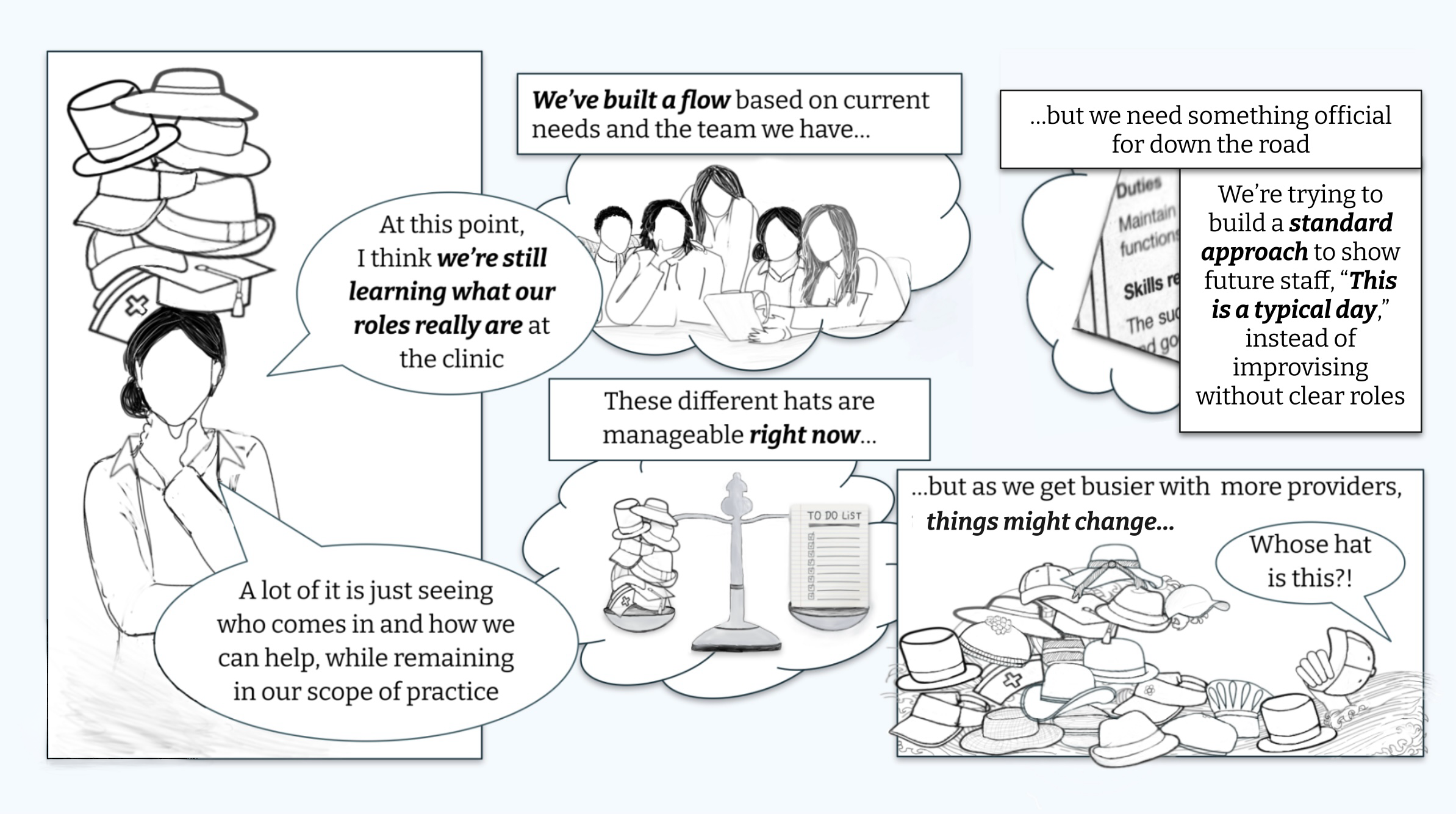Below is a series of comic-style panels illustrating a conversation between Madison Howey – a researcher-artist – and a registered nurse at a community health center. The conversation took place during field research as part of an urban ethnographic field school. These panels highlight the extensive organizing work involved in the organization’s operations.
The panels depict the interlocutor’s multifaceted role, including triaging, assisting physicians, patient education, teaching students, and providing resources and referrals. The researcher-artist uses the visual metaphor of “wearing multiple hats” to symbolize the many responsibilities she juggles. The imagery conveys the complexity and organizational effort involved in her work.
The next series of panels show that the interlocutor’s role is not only multifaceted, but her tasks are also unpredictable. The tasks can range from managing a busy clinic with many patients to quieter days focused on administrative work. The illustrations show different scenarios, including a line of pregnant women, prescription dispensing, and various hats symbolizing different roles. The nurse reflects on the fluidity and adaptability required in her job.
The final set of panels depicts the nurse discussing the evolving nature of her role and the need for adaptable workflows. She talks about learning and adjusting roles based on the team’s current needs and mentions efforts to establish a more standardized approach for future staff. The imagery includes a balance scale with hats, a to-do list, and a chaotic pile of hats representing potential future changes and challenges as the clinic grows and more providers join. The nurse emphasizes the importance of flexibility and clarity in their work.
To ensure confidentiality, the comic-style panels do not show the nurse’s face. The inclusion of “real” images, such as the pill bottle, the computer, and the researcher’s hair, enhances the authenticity and relatability of the scenes. This implies that, although narrated in comic style, the actual conversation was ethnographically captured. On the other hand, the visual metaphors, like the multiple hats and the balanced scale, effectively illustrate the researcher-artist’s interpretation of the nurse’s diverse responsibilities and the dynamic nature of her role. These techniques afforded by the medium of comic panels provide a vivid, engaging representation of the complexities and demands of working in a community health center.


